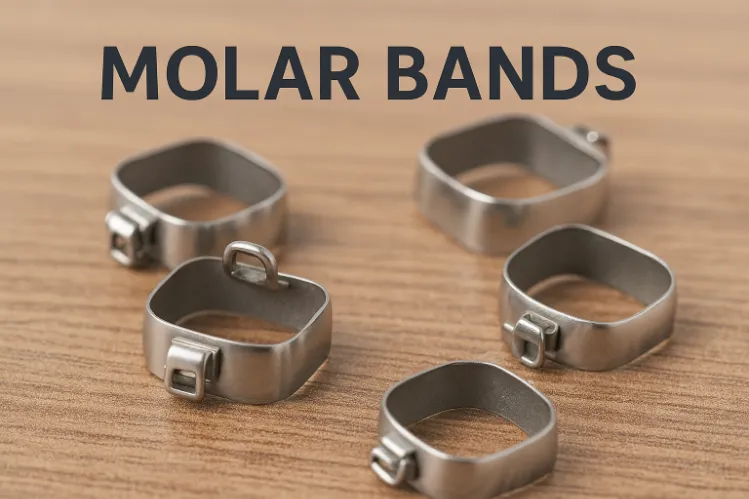.webp)
An underbite is a malocclusion in which the lower teeth rest in front of the upper teeth. It is a cosmetic matter, usually. However, when the misalignment gets severe, it causes difficulties with chewing, speech, and even breathing. And it does more than that. It also produces chronic jaw pain, tooth decay, and gum disease.
Now, people with this condition are often concerned about the cost of an underbite fix. And as the treatments for an underbite vary, so do the costs. So, to help you figure out, here’s a detailed breakdown of the costs of an underbite fix.
The cost of correcting an underbite varies widely, depending on the treatment method. Here’s a low-down on it:
Now, which treatment will suit you best depends on your case severity and your budget. We’ll be exploring that in more detail later.
Beyond the primary treatment cost, patients should budget for:
These smaller expenses can add up, so it’s important to factor them into the total budget.
Insurance coverage depends on whether the correction is deemed medical or cosmetic. If the underbite affects chewing, speech, or breathing, medical insurance may cover a portion of orthodontics or surgery. If it’s purely aesthetic, patients usually pay out of pocket.
Overall, an underbite surgery cost in the UK is covered by the NHS. It is free for children below 18 years of age. Adults, however, have to pay a band 3 charge of £326.70. Your dentist can confirm if you are eligible for treatment under the NHS.
.webp)
Several variables play a role in determining the total cost of underbite correction:
This one matters the most:
A mild misalignment requiring only dental movement costs less, for obvious reasons. Whereas a severe skeletal issue needing surgical correction costs quite a lot.
Prices vary widely between urban centers and smaller towns. For example, treatment in London will typically cost more than in rural areas.
Highly experienced specialists may charge higher fees. That said, their skill often leads to better outcomes.
Braces or aligners worn for 2–3 years will cost more than short-term corrective treatment.
These are the factors that ultimately decide the cost of your underbite fix.
Here’s a breakdown of what typically works best for each level of severity:
Mild underbite cases have slight dental misalignment. There’s no major jaw discrepancy. And so, these are often easier to treat and may not require invasive procedures.
Invisible braces, or clear aligners, are great for mild underbites. They gradually shift the teeth into proper alignment while being discreet and comfortable. They are especially popular with adults who want a less noticeable treatment option.
Best for: Adults and teens with slight dental underbites.
Advantages: Nearly invisible, removable for eating and cleaning, less disruptive to daily life.
So, do braces fix underbite? Traditional braces can fix an underbite perfectly, especially in younger patients. They provide more control over tooth movement compared to aligners.
Best for: Children and teens, where early correction prevents future complications.
Advantages: Reliable, widely available, and effective even in borderline moderate cases.
Now, many people are not sure about how these two differ. So, check out What’s Different in Braces and Invisible Braces .
Moderate cases usually involve a mix of dental and slight skeletal issues. These require more robust orthodontic intervention.
People usually ask: Can braces fix underbite in moderate cases? Well, they very well can. Actually, braces are the typical treatment for moderate underbites. They provide precise adjustments over time.
Best for: Children, teens, and adults with noticeable but manageable underbites.
Advantages: Versatile and effective for both dental and minor jaw alignment.
Clear aligners are slowly taking over as the go-to treatment for moderate underbite cases. Their discreet method and ease of use, combined with good results, make them attractive.
Best for: Adults wanting a discreet option without severe skeletal issues.
Advantages: More aesthetic than braces, though not suitable for all moderate underbites.
Severe cases typically involve significant skeletal discrepancies, where the lower jaw protrudes far beyond the upper jaw. Orthodontics alone usually cannot resolve these.
Palatal expanders, reverse-pull face masks, or chin caps can guide jaw growth in young patients, since their bones are still developing. Thus, starting treatment early may prevent the need for surgery later.
Best for: Children (ages 6–12) with developing skeletal underbites.
Advantages: Non-invasive, can reduce or eliminate the need for surgery later in life.
In adults or in severe cases where jaw growth is complete, surgery is often necessary. This procedure repositions the jaw to create a balanced bite. It is usually combined with orthodontic treatment before and after surgery.
Best for: Adults with significant skeletal underbites not correctable by orthodontics alone.
Advantages: Permanent solution, dramatically improves both function and facial appearance.
This is just to give you an idea of which type of underbite fix usually works for a certain case severity. Individually, your dentist or aligner provider can better guide you if you are a good candidate for a particular treatment.
Now, some of us might be a bit “intimidated” by the costs of an underbite fix. And perhaps we’re thinking about how to fix underbite naturally. Well, some people recommend mewing for that. It’s absolutely free to do. But does it work?
.webp)
Mewing is a facial posture technique that involves pressing the tongue against the roof of the mouth. It is said to maintain proper tongue placement and improve overall oral posture. Being quite popular in the online communities, many claim it can reshape the jawline and even correct certain bite problems.
However, when it comes to fixing an underbite, the evidence is lacking:
Mewing may impact jaw development in children and teens. That’s because their bones are still growing and adaptable. However, in adults, mewing is unlikely to reverse or correct an established underbite. The facial bones are already fused and cannot be significantly reshaped through posture alone.
An underbite caused by minor dental misalignment might respond to orthodontic treatment, but not to mewing. Skeletal underbites, where the lower jaw is physically larger or protrudes forward, require orthodontics or surgery for real correction.
While mewing enthusiasts share anecdotal before-and-after photos, there are no peer-reviewed studies proving that mewing can correct malocclusions such as an underbite. Professional orthodontists and maxillofacial surgeons generally consider it ineffective for anything beyond improving posture or breathing habits.
That said, mewing may encourage better oral posture, which can support proper breathing, reduce tongue thrusting, and promote healthier habits in children. But these effects are preventative at best, not corrective.
The verdict? Mewing cannot fix an underbite. Especially in adults. So, the search for how to fix underbite naturally might not lead you anywhere. If you’re hoping to correct an underbite, the proven paths remain orthodontic treatments (like braces or clear aligners) for mild to moderate cases, and surgery for severe skeletal ones.
Absolutely.
Yes, the cost and time commitment can be problematic. However, correcting an underbite has long-term benefits that go far beyond appearance. It will improve chewing efficiency, reduce wear and tear on teeth, ease jaw pain, and can even prevent speech and breathing issues.
On top of the health benefits, many people notice a boost in confidence and self-esteem after treatment.
Thus, fixing an underbite is an investment not only in your smile but also in your overall health and quality of life.
Correcting an underbite is worth every penny. However, it is also understandable how costs can become a hurdle.
For people with mild to moderate cases, affordable clear aligners can get the job done at fairly low prices. And for severe cases, you can get NHS coverage to make the treatment easier on your pocket.
Everything considered, to get clarity on treatment and costs, consult an orthodontist or take a clear aligner assessment. That way, you’ll get a personalized treatment plan, cost estimate, and financing options that will make your journey to a healthier smile more affordable.




Curated the best for your knowledge
.png) Metallic Taste in Mouth: Causes and How to Get Rid of It
Metallic Taste in Mouth: Causes and How to Get Rid of ItHaving metal taste in the mouth first thing in the morning can be an unexpected experience. You wake up, take a swallow, and suddenly have a metallic taste in your mouth, as if you'd been chewing on a handful of change. It's annoying, a little scary, and sometimes for no apparent reason. For some people, it will be nothing but a minor nuisance; others may fall into the late-night goose chaser. Sometimes it's a sign that there is something wrong with your braces; other times, it could mean that there is something wrong with one of your teeth. But here's the good news: Most metallic tastes are temporary, harmless, and can be treated or resolved. So let's take a closer look at the possibilities.
Read More How Molar Bands Work in Braces and Retainers to Keep Your Teeth in Line
How Molar Bands Work in Braces and Retainers to Keep Your Teeth in LineIf you’ve ever started orthodontic treatment, you already know there are a lot of tiny pieces involved. Wires, brackets, elastics, retainers, attachments… and then there are molar bands. They’re not as famous as braces themselves, but they play a surprisingly big role in keeping your smile moving in the right direction. Some people don’t really notice them. While others desperately want to know why that metal ring is even there. So let’s break it all down: what molar bands are, why orthodontists use them, and how they work in both braces and retainers. Plus, what you should expect throughout the process.
Read More.webp) Dental Bonding Cost: Prices, Process & What to Know
Dental Bonding Cost: Prices, Process & What to KnowIf you’re thinking about fixing a chipped tooth, closing a gap, or smoothing out uneven edges, dental bonding is often the easiest (and quickest) way to do it. And honestly? It’s one of the most budget-friendly cosmetic treatments out there, if you know what to expect. But here’s the part everyone worries about first: “How much does tooth bonding cost?” The short answer: it depends. The long answer: let’s break it all down so you actually understand where the price comes from, what you’re paying for, and whether bonding is the right fix for your smile.
Read MoreQuick Links

Heading